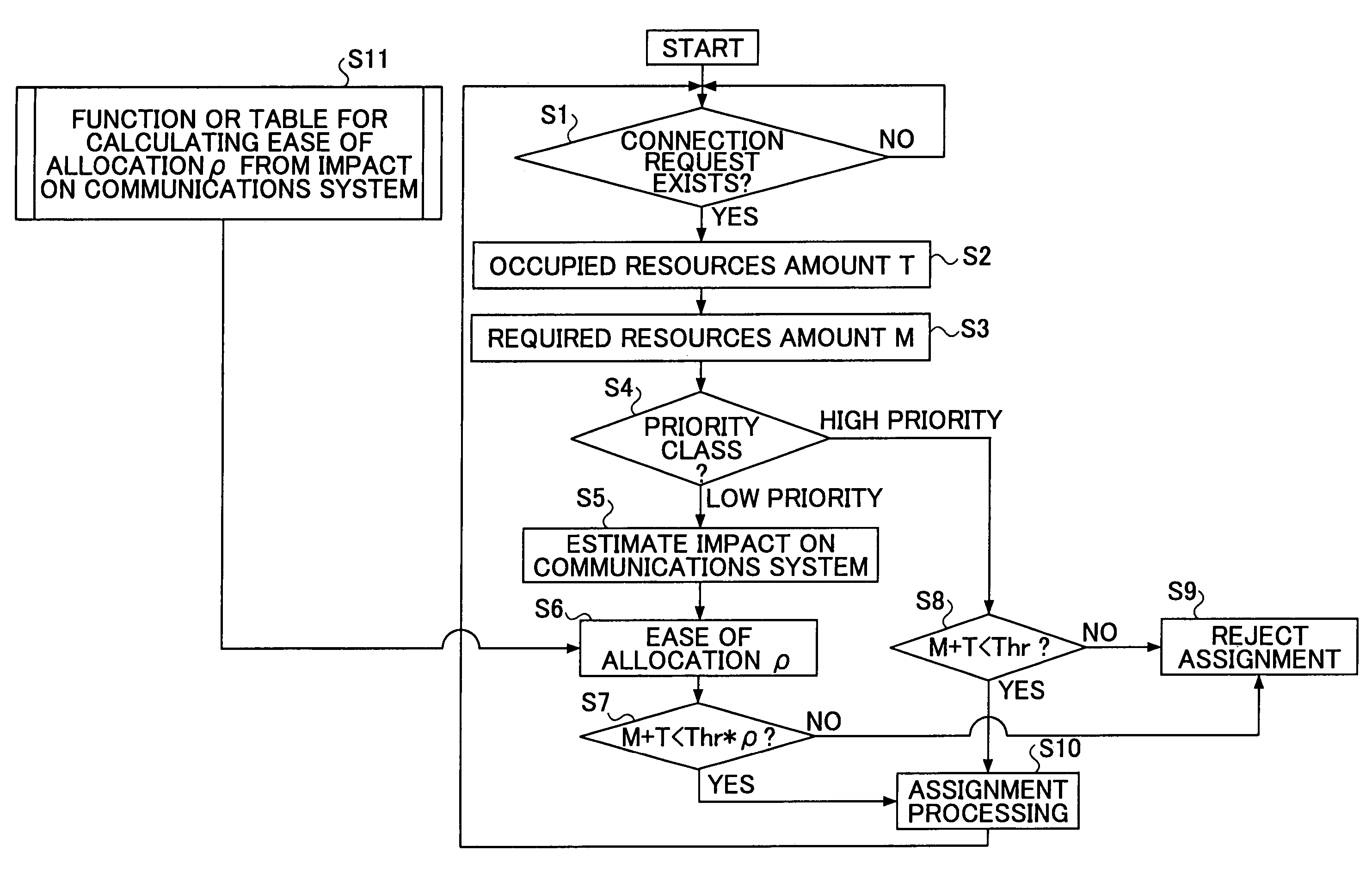Call-admission controller and method of call-admission control
a controller and call technology, applied in the field of call admission controller and call admission control, can solve the problems of high resource requirement, call admission requests that end up getting rejected, and resources that cannot be efficiently utilized, so as to increase the utilization efficiency of shared resources
- Summary
- Abstract
- Description
- Claims
- Application Information
AI Technical Summary
Benefits of technology
Problems solved by technology
Method used
Image
Examples
first embodiment
[0031]FIG. 2 is a flowchart for describing an operation according to the present invention.
[0032]First, the call-admission processing section 30 checks for a connection request for a call, and, if there is a connection request for a call (Yes in Step S1), proceeds to Step S2, while, if there is no connection request for a call, waits for a connection request for a call. Once a connection request for a call is received in Step S1, the communication-equipment control section 40 obtains currently in-use shared resources amount T (Step S2) and furthermore obtains requested resources amount M of the connection-requested call (Step S3). The communication-equipment control section 40, upon thus obtaining the in-use shared resources amount T and the requested resources amount M, places these sets of information in the memory 50.
[0033]The call-admission processing section 30 in Step S4 determines the priority of a call requesting a connection so that, when the priority class is high-priority...
second embodiment
[0050]FIG. 3 is a flowchart for describing an operation according to the present invention.
[0051]In this embodiment, the same operations for the first embodiment as described above are performed in Steps S21 through S24. Therefore, hereafter, operations from Step S25 onward are described.
[0052]For a call-admission processing section 30, in a case that the priority class of a call for which a connection is requested is a low-priority class, the impact on the communications system in a case that the call is allocated is measured (Step S25) so that, if the impact does not exceed a threshold value defined in advance (No in Step 25), the call-admission threshold value is set to Thr of the high-priority class. On the other hand, in a case that the impact as described above exceeds the threshold value defined in advance (Yes in Step S25), the call-admission threshold value is set to Thr0 of the low-priority class.
[0053]In the call-admission processing section 30, when in Step S25 the impac...
third embodiment
[0056]FIG. 4 is a flowchart for describing an operation according to the present invention.
[0057]In a case of the present embodiment, the same operations as in the first or the second embodiment as described above are performed in Steps S31 through S33. Therefore, hereafter, operations from Step S34 onward are described.
[0058]The call-admission processing section 30, with a connection request for a call, first, estimates the remaining (idle) amount of shared resources, in a case of having admitted the call for which the connection request was made, from the in-use shared resources amount T and the requested resources amount M (Step S34), performs the above-described call-admission processing (Step S35) only when it is determined that there are affordable shared resources (Yes in Step S34), while when it is determined that there are no affordable shared resources (No in Step S34), proceeds to the process of determining the call priority as described above. This process of determining...
PUM
 Login to View More
Login to View More Abstract
Description
Claims
Application Information
 Login to View More
Login to View More - R&D
- Intellectual Property
- Life Sciences
- Materials
- Tech Scout
- Unparalleled Data Quality
- Higher Quality Content
- 60% Fewer Hallucinations
Browse by: Latest US Patents, China's latest patents, Technical Efficacy Thesaurus, Application Domain, Technology Topic, Popular Technical Reports.
© 2025 PatSnap. All rights reserved.Legal|Privacy policy|Modern Slavery Act Transparency Statement|Sitemap|About US| Contact US: help@patsnap.com



